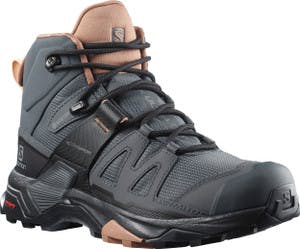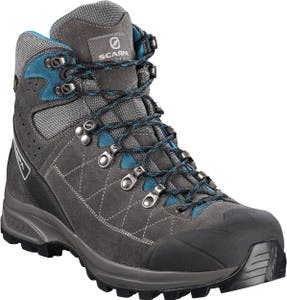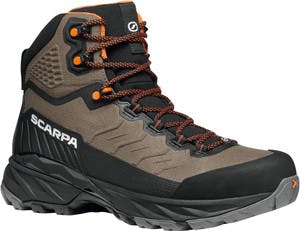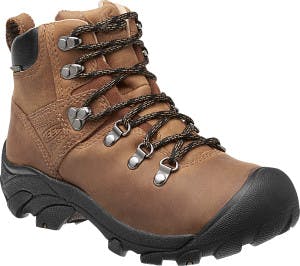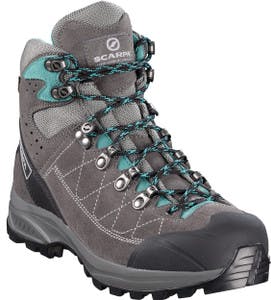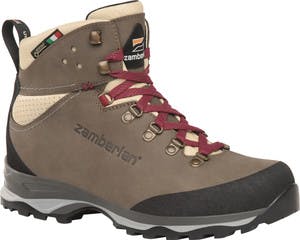Boots for hiking and backpacking
Showing 93 results
- (382)Salomon X Ultra Mid 4 Gore-Tex Light Trail Shoes - Women's$109.93$209.95
- (115)Salomon Quest 4 Gore-Tex Hiking Boots - Women's$289.95
- (30)Scarpa Kailash Trek Gore-Tex Hiking Boots - Men's$290.94$388.95
- (6)Scarpa Rush Trek LT Gore-Tex Hiking Boots - Men's$216.71$288.95
- (4)Zamberlan 309 New Trail Lite Gore-Tex Hiking Boots - Men's$299.95
- (112)Merrell Moab Speed 2 Mid Gore-Tex Light Trail Shoes - Men's$229.95
- (333)Keen Pyrenees Waterproof Hiking Boots - Men's$229.95
- (34)Merrell Moab Speed 2 Light Trail Mid Waterproof Shoes - Men's$239.95
- (142)The North Face Vectiv Fastpack Mid Waterproof Hiking Boots - Men's$209.99
- (0)Oboz Sawtooth Ascent Mid B-DRY - Women's$199.95
- (0)Oboz Hyalite Mid B-Dry - Women's$219.95
- (0)Zamberlan 334 Circe Gore-Tex Hiking Boots - Women's$299.95
- (6)Salewa Mountain Trainer 2 Mid Gore-Tex Hiking Boots - Women's$359.95
- (615)Merrell Moab 3 Mid Waterproof Light Trail Shoes - Women's$189.95
- (94)Keen Hightrail Mid Waterproof Light Trail Shoes - Women's$199.95
- (1)On Cloudrock Mid Waterproof Hiking Boots - Women's$279.95
- (0)Baffin Elora Mid Winter Hiking Boots - Women's$249.95
- (1)Keen Zionic NXT Mid Waterproof Hiking Boot - Women's$229.95
- (11)Arc'teryx Kopec Mid Gore-Tex Hiking Boots - Women's$240.00
- (0)Salewa Pedroc 2 Mid PTX Boots - Men's$239.95
- (0)Zamberlan Thunder Gore-Tex Hiking Boots - Men's$399.95
- (0)Baffin Bruce Mid Winter Hiking Boots - Men's$249.95
- (0)Merrell Speed Strike 2 LTR Thermo Mid Waterproo Boots - Men's$189.95
- (0)Salomon Shelter Waterproof Boot - Men's$169.95
- (0)Keen Zionic Mid Waterproof Hiking Boots - Children to Youths$119.95
- (0)Lowa Renegade EVO GTX Mid Hiking Boots - Women's$389.95
- (0)Oboz Katabatic LT Mid GTX - Women's$249.95
- (11)Salomon X Ultra 5 Mid Gore-Tex Trail Shoes - Women's$229.95
- (22)Scarpa Kailash Trek Gore-Tex Hiking Boots - Women's$290.94$388.95
- (0)Zamberlan 320 Trail Lite EVO Gore-Tex Hiking Boots - Women's$399.95
- (0)Oboz Bridger Ridge Mid GTX Hiking Boots - Women's$298.95
- (0)Oboz Katabatic LT Mid GTX - Men's$249.95
- (1)Zamberlan 1025 Tofane NW Gore-Tex Backpacking Boots - Women's$559.95
- (57)Salomon X Ultra 5 Mid Gore-Tex Trail Shoes - Men's$229.95
- (34)Merrell Moab Speed 2 Thermo Waterproof Winter Boots - Women's$259.95
- (1)On Cloudrock Mid Waterproof Hiking Boots - Men's$279.95
- (17)The North Face Vectiv Fastpack Mid Waterproof Hiking Boots - Women's$209.99
- (53)Oboz Bridger Mid B-Dry Hiking Shoes - Women's$259.95
- (2)Scarpa Rush Trek Gore-Tex Hiking Boots - Women's$147.93$298.95 - $299.00
- (8)Salomon X Ultra 360 Edge Mid Gore-Tex Light Trail Shoes - Women's$204.95
- (0)Scarpa Kailash Trek Gore-Tex Boots - Men's$388.95
- (1)Oboz Sawtooth Ascent Mid B-DRY - Men's$199.95
- (6)Zamberlan 331 Amelia Gore-Tex Hiking Boots - Women's$369.95
- (402)Keen Pyrenees Waterproof Hiking Boots - Women's$229.95
- (0)Scarpa Rush TRK Gore-Tex Boots - Women's$288.95
- (0)Scarpa Terra Gore-Tex Boots - Women's$298.95
- (2)Zamberlan 1025 Tofane NW Gore-Tex Backpacking Boots - Men's$559.95
- (51)Merrell Thermo Kiruna 2 Mid Shell Waterproof Winter Boots - Women's$199.95
- (32)The North Face Back-To-Berkeley IV Leather Waterproof Boots - Women's$199.99
- (6)La Sportiva TX Hike Mid Gore-Tex Light Trail Shoes - Men's$239.95
- (0)Zamberlan Thunder Gore-Tex Hiking Boots - Women's$424.95
- (0)Lowa Renegade EVO GTX Mid Hiking Boots - Men's$389.95

